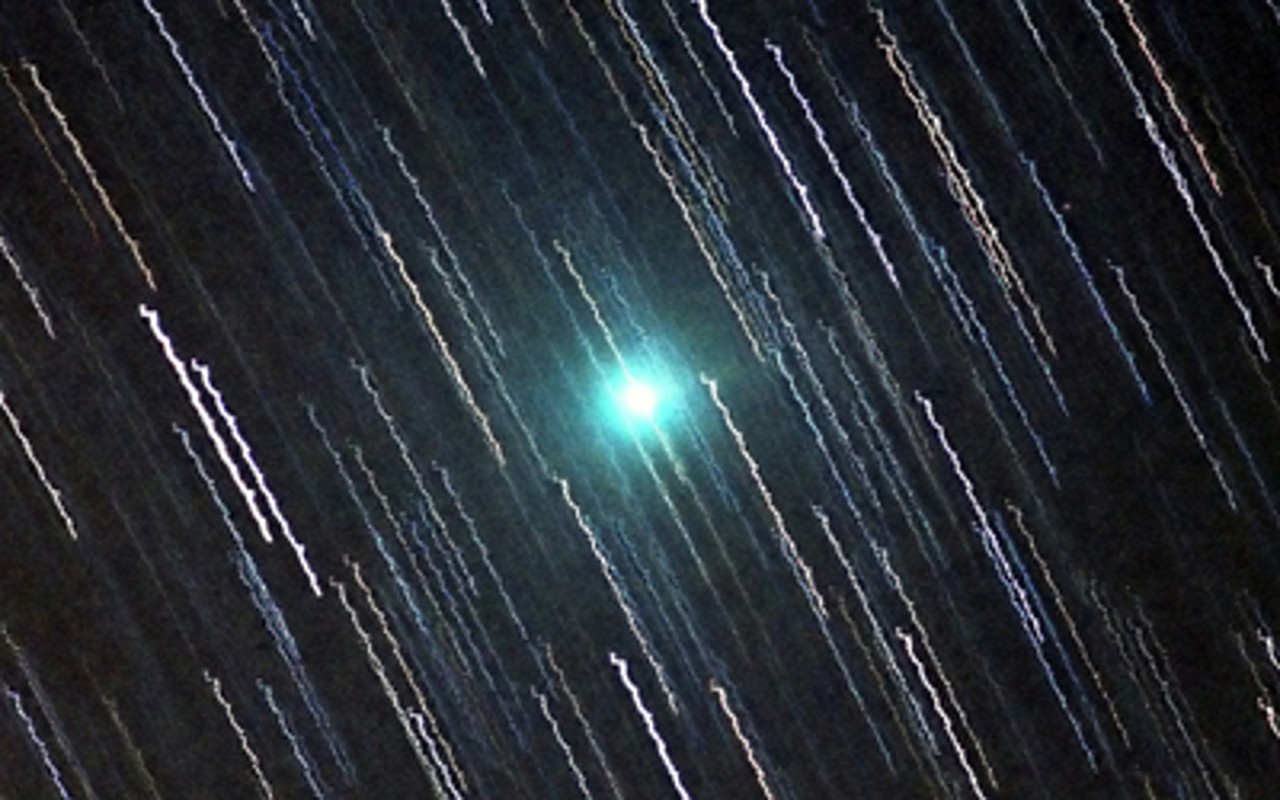The Eta Lyrid meteor shower peaks tonight. Stay up late and wish upon a falling star
Patient skywatchers will be able to see fireballs rain down from the constellation of Lyra, the harp.

The annual Eta Lyrids meteor shower will peak tonight (May 9), offering skywatchers the opportunity to see meteors streak through the dark skies over Earth.
The 2023 Eta Lyrids began on May 3 and will end on May 14 this year. According to In the Sky the meteor shower is expected to reach peak activity overnight at around 1:00 a.m. EDT (0500 GMT) on May 10. The best time to see the Eta Lyrid meteors is when the shower's radiant point in the Lyra constellation is high above the horizon. The radiant is the point in the sky from which the meteors of a particular shower appear to streak.
From New York City the radiant reaches its highest, or "culminates" at 86 degrees above the horizon at around 5:00 a.m. EDT (0900 GMT) on May 10, just after sunrise, meaning the best time to spot meteors is in the hours before dawn. From observers in this part of the world, the radiant will be above the horizon all night, according to In the Sky, so meteors should be visible all evening and into the early morning.
To locate this late night shower, look to the northeast to find Lyra, easily recognizable thanks to Vega, the constellation's brightest star and the second-brightest in the night sky of the Northern Hemisphere behind Polaris. Once you've found it, get comfortable and allow your eyes to adjust to the dark. With a little patience, you just might catch sight of a few Eta Lyrids.
Related: Meteor showers 2023: Where, when and how to see them

Looking for a telescope to observe Lyra or or anything else in the sky? We recommend the Celestron Astro Fi 102 as the top pick in our best beginner's telescope guide.
When the radiant is at its highest above an area of the globe, this means that this part of the planet is turned optimally toward the direction that meteors enter Earth's atmosphere. This results in meteors raining down vertically toward Earth, allowing them to be seen as short streaks of light close to the radiant.
At other times when a region of Earth is orientated away from the radiant, instead of raining down vertically, meteors make a more horizontal passage through the atmosphere. This means that they burn up more slowly and give rise to longer streaks of light known as "Earthgrazers."
Breaking space news, the latest updates on rocket launches, skywatching events and more!
While not the most spectacular of meteor showers, the Eta Lyrids can produce a rate of around three meteors per hour, but this is in ideal viewing conditions with dark skies and clear weather. That means realistic skywatchers should expect to see fewer meteors from the Eta Lyrids, and may have to be a little patient while fireball hunting, with In the Sky estimating the Eta Lyrids will deliver around two meteors per hour.
Further complicating the detection of meteors from the Eta Lyrids will be the fact that the moon is around its last quarter phase during the peak of the shower. The lunar face will thus be half-illuminated and after it rises at around 11:47 p.m. EDT (0347 GMT), meaning the light of the moon could interfere with the chance of spotting meteors.
Like all meteor showers, the Eta Lyrids are created when Earth passes through dusty debris left around the sun by a comet or an asteroid. As icy comets approach the sun, radiation from our star heats material beneath their surfaces, causing it to transform from solid ice to gas in a process called sublimation.
The venting of this gas from the comet causes dust and other fragments to be blown away. This results in comets brightening and accelerating as they approach the sun, and this material can follow the comets as a halo called a "coma" or as a characteristic bright tail. Comets can also leave clouds of this material around the sun, which Earth can pass through as it makes its own 365.25-day journey around the star.
As Earth enters a particularly dense cloud of this dusty debris, fragments pass through our planet's atmosphere at speeds as great as 104,000 miles per hour (167,370 km/h), or about 70 times as fast as a jet fighter. As they burn up at altitudes of around 44 to 62 miles (70 to 100 kilometers), these fragments create the streaks we call "shooting stars."
The parent body of the Eta Lyrids has been identified as the comet C/1983 H1 (IRAS-Araki-Alcock). The comet has a long orbit around the sun taking around 970 Earth years to circle the star. In 1983, C/1983 H1 made the closest approach to Earth of any comet in the last 200 years, coming to within around 3 million miles of our planet.
If you want to get a closer look at Lyra to hopefully see some of the Eta Lyrids, our guides to the best telescopes and best binoculars are a great place to start.
And you're looking to take your own photos of meteor showers or anything else in the night sky, check out our guide on how to photograph meteors and meteor showers, as well as our best cameras for astrophotography and best lenses for astrophotography.
Editor's Note: If you snap an image of an Eta Lyrid meteor, and would like to share it with Space.com's readers, send your photo(s), comments, and your name and location to spacephotos@space.com.

Robert Lea is a science journalist in the U.K. whose articles have been published in Physics World, New Scientist, Astronomy Magazine, All About Space, Newsweek and ZME Science. He also writes about science communication for Elsevier and the European Journal of Physics. Rob holds a bachelor of science degree in physics and astronomy from the U.K.’s Open University. Follow him on Twitter @sciencef1rst.

